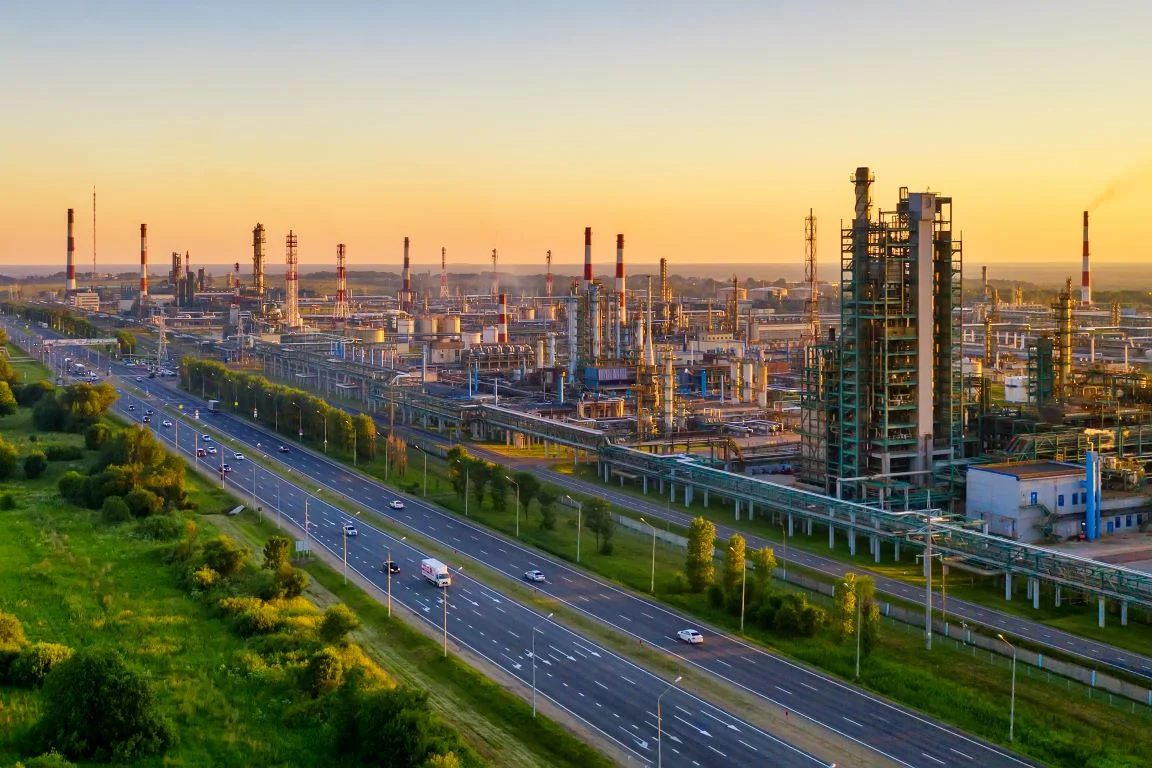FOCUS ONA
The new configuration of the world oil market

After three difficult and trying years of the Covid-19 pandemic, followed by the disruption to trade caused by Russia's large-scale invasion of Ukraine, the world's oil markets are still readjusting. An "unprecedented reshuffle" of the international oil and gas trade is underway.
Production restrictions imposed by the Organisation of the Petroleum Exporting Countries and its allies (known together as Opec+) will soon cushion an increase in global oil supplies, which could lead to a significant tightening of oil markets worldwide. However, according to the International Energy Agency, market pressures will ease over the coming years as other sources fill the gap in the market.
Even after a year of invasion, Russian oil supply levels to Europe remained high. Many Western countries have joined forces to curb Russian supplies, but this has not prevented Russia from generating significant revenues.
Western sanctions and price caps on Russian supplies
Last year, the EU, the G7 countries and Australia imposed a price cap of $60 a barrel on Russian seaborne oil from 5 December, in response to Russia's invasion of Ukraine.
According to a press release from the European Commission, the Price Cap Coalition would limit costs due to market conditions and would reduce Russia's oil profits since its invasion of Ukraine. The cap would also help to stabilise global energy costs, while limiting the negative effects on energy supplies to less economically developed countries, he said.
The price caps allows Russia to export oil to third countries via G7 and EU tankers, insurance companies and financial institutions only when it is sold at $60 a barrel or less. Al Jazeera reported that, given that most of the world's transport and insurance companies are in the G7 countries, the cap makes it much riskier for Russia to sell its oil at a higher price.
The EU conducted a two-month assessment before implementing the price cap, setting it at least 5% below the average market price of Russian oil and oil products. The coalition of the G7, the EU and Australia has set price caps for Russian seaborne oil from 5 February 2023.
Following the capping of prices at $60, the UK and its coalition partners declared that they would only provide services facilitating the sea transport of refined petroleum products from Russia on condition that "goods are traded at $100 for high-value products such as diesel and $45 for low-value products".
In February, the British Chancellor Jeremy Hunt said "Undermining Putin's war machine with new sanctions on his funding streams will ensure that the Russian government faces the full consequences of its unjustifiable actions."
India and China see an opportunity in Western sanctions
However, countries that do not apply sanctions can continue to buy Russian oil above the ceiling price without using Western services to buy, insure or transport it.
Dmitri Peskov, Press Attaché to the Russian President, said on sanctions: "A decision [on Russia's retaliatory measures] is being prepared. One thing goes without saying. We will not accept any price caps", declared the Russian press agency Interfax .
India has refused to comply with the $60 price imposed on Russian seaborne oil. On 7 December, Indian Foreign Minister Subrahmanyan Jaishankar told the government that Indian refiners would continue to seek the best options in the country's interests.
"We are not asking our companies to buy Russian oil. We ask our companies to buy oil [based on] the best possible option. Now, it depends on what the market has in store for us. Please understand that we don't just buy oil from one country. We buy oil from multiple sources, but it is a sensible policy to go where we get the best deal in the interest of the Indian people, and that is exactly what we are trying to do," said Jaishankar .
India is the largest importer of seaborne oil from the Urals, accounting for 50% of Russian exports, and China the second largest. In May 2023, China and India imported record levels of Russian crude oil, facilitated by reduced supply prices, reducing demand for oil from other regions such as the Middle East and Africa. With neither country having signed up to sanctions, the reduced prices of Russian oil above the $60 a barrel ceiling remained below OPEC oil prices.
In March, private oil refiners Hengli Petrochemical and Jiangsu Eastern Shenghong Company received imports of Russian crude. Four cargoes containing 740,000 barrels of low-sulphur crude were unloaded at Hengli's port of Dalian in the same month, and two more in April.
Imports of Russian pipeline gas and liquefied natural gas into China have been multiplied by 2.6 and 2.4 respectively in 2022. Chinese imports have also jumped by 20 %, to 68.06 million tonnes.
Russia's "backdoor" entry into Europe
Faced with the sanctions imposed by Western countries, Russia has turned to neutral parties to conclude new agreements. According to Russian Deputy Prime Minister Alexander Novak, Russian oil exports to India have increased by 2,200% since the country was sanctioned.
However, this has raised concerns about the possibility of Europe receiving Russian supplies "through the back door", via India. Reuters reported in April that record imports of Russian crude oil in the 2022-2023 financial year had helped Indian refiners to increase their exports of diesel and jet fuel to Europe.
The reduced tariffs have enabled India to export refined products competitively to Europe, taking a larger share of the market. Before the invasion of Ukraine, Europe imported an average of 154,000 b/d of diesel and jet fuel from India. Since the ban on petroleum products came into force in the EU, this volume has risen to 200,000 b/d.
As a result, Europe appears to have replaced Russian oil with supplies from other countries instead of reducing demand. According to Energy Monitor , the website Offshore Technology Some of the EU's new imports could come from Russia, as the increase in Russian oil exports to certain African countries has coincided with an increase in exports of refined products from these countries.
Dependence on Russian supplies declining; export revenues plummeting
Since the full-scale invasion of Ukraine, sanctions have progressively put Russia under pressure in the energy sector, including price caps and the embargo on Russian seaborne oil.
According to GlobalData, the parent company of Offshore Technology Focus the volume of oil transferred via Russian pipelines fell by 37% over one year in the first seven weeks of 2022. European energy costs rose by 54% in the second half of 2021, while gas prices tripled and crude oil prices reached $105 a barrel.
"Russia's non-energy revenues are on track to grow as expected, with the possibility of a small surplus by the end of the year, but there is a problem with energy revenues," said Russian Finance Minister Anton Siluanov in a statement in may.
Russian oil and gas revenues fell by 47% between January and June 2023 compared with the same period last year, according to GlobalData 3.38 billion rupees ($37.4 billion).
In June 2023, revenues from natural gas fell by 54% to 125.7 billion rupees ($1.3 billion), while crude oil and petroleum products fell by almost a tenth to 402.8 billion rupees ($4.2 billion).
Before the invasion, the state-owned oil and gas company Gazprom was Europe's largest supplier. On 24 August 2023, the results for the second quarter of Gazprom Neft reported a 43% fall in net profits to 140.1 billion rupees ($1.5 billion). Russian companies have not disclosed many of their financial results since the invasion of Ukraine in February 2022, and Gazprom Neft did not publish its financial results last year.
Further OPEC+ supply cuts lead to unprecedented oil demand
On 3 July, Russian Deputy Prime Minister Alexander Novak announced a voluntary production cut of 500,000 barrels a day to boost oil prices.
Brent crude oil rose by 1.6% after this announcement, reaching $76.6 a barrel, followed by the announcement by Saudi Arabia of a voluntary production cut of one million barrels a day for a further month.
In July, the Opec+ encouraged a reduction in production to 50.7 million barrels per day, a drop in world oil supply of 910,000 b/d. However, these changes have encouraged an increase in non-OPEC oil production. The IEA's forecasts show that non-OPEC+ countries will continue to increase their oil production would probably dominate global supply growth next year, as "increasing OPEC+ supply cuts have collided with improving macroeconomic sentiment and unprecedented global oil demand".
Slower demand for oil in the years ahead
Uncertain global economic conditions, coupled with Opec+ decisions and Beijing's refinery policy, "will play a crucial role in balancing crude oil and product markets", says the IEA in its recent oil report.
The report states that global oil demand is "expected to slow" over the period 2022-2028 as a result of existing policies and progress on the energy transition. Down by 150,000 barrels per day (b/d), the new forecasts show that oil demand growth will fall to one million barrels per day.
"World oil demand is at record levels, driven by strong summer air traffic, increased use of oil for power generation and a surge in Chinese petrochemical activity," said the IEA in its latest oil reportaoût .
Even if indirect dependence on oil and gas demand has not decreased as much as countries had hoped, sanctions have nevertheless pushed countries to meet certain oil and gas demands through domestic production.
"Oil producers need to pay particular attention to the accelerating pace of change and calibrate their investment decisions to ensure an orderly transition," said Birol.
-

 ANALYSIS1 an ago
ANALYSIS1 an agoThe 3 African countries richest in natural resources
-

 NEWS11 month ago
NEWS11 month agoTop 10 des pays africains producteur de l’or : Mali 2-eme, Burkina Faso 3-eme
-

 FOCUS ONA1 an ago
FOCUS ONA1 an agoThe 10 largest oil refineries in Africa
-

 FOCUS ONA11 month ago
FOCUS ONA11 month agoTop 10 oil producers in Africa in 2023
-

 NEWS2 ans ago
NEWS2 ans agoRanking of oil producers: Here are the Top 10 African countries.
-

 NEWS8 month ago
NEWS8 month agoAfrica's 10 largest natural gas production fields.
-

 NEWS2 ans ago
NEWS2 ans agoTop 20 oil producing countries in 2022
-

 NEWS10 month ago
NEWS10 month agoIvory Coast: Eni to deploy a cylindrical FPSO and a converted FSO on the Baleine oil field












